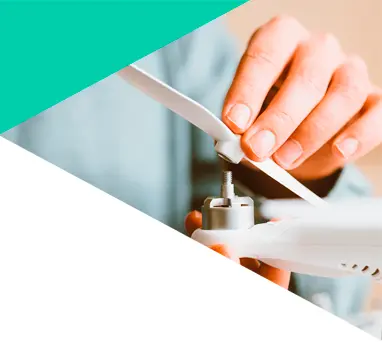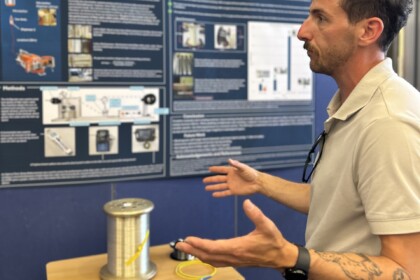
STEM In The Community

From Kayaks to Cables: How Mike Baldon Found His Way to STEM

By Chelsea Crowley | November 2, 2025
Meet Mike Baldon! Mike is an Engineering student at Cape Cod Community College (4Cs) whose path to STEM has been anything but ordinary, from photography and 3D printing to guiding kayak tours on the Cape.
“I’ve always had an interest in technology,” he said. “I studied and worked as a photographer when I was younger, and there’s a good deal of technical know-how needed for that.” Later, Mike worked in Texas operating commercial-scale 3D printers before moving to Massachusetts, where his career took an unexpected turn.
“I became a kayak guide,” he explained. “I was taking people, locals and tourists, out into natural habitats and trying to explain the natural processes going on and the plants and animals we would see. I realized that there was a ton of information I needed to learn myself before I would be able to teach others.” That realization sparked a new curiosity and ultimately led him to return to school to study Environmental Science.
“Once I started taking classes, my love for environmental science grew, and my old love of technology came back,” Mike said. “They sort of blended together.”
That blend of curiosity and creativity guided Mike to the Woods Hole Oceanographic Institution (WHOI), where he participated in two research experiences connected to 4Cs: the Blue Economy Spring Internship Program and the Community College Research Experiences at WHOI (CC-CREW) Summer Internship Program, led by WHOI research associate and 4Cs adjunct professor of biology and microbiology, Dr. Gretta Serres, and Marine Chemistry & Geochemistry Senior Scientist, Dr. Julie Huber.
During his summer internship at WHOI, Mike joined Dr. Mike Jakuba’s lab in WHOI’s Applied Ocean Physics and Engineering (AOP&E) department. “Mike put me on a project that was looking at the feasibility of winding our own spools of bare fiber-optic cable to be used on deep-sea deployment,” he said.
The work centered around Nereid Under Ice, a remotely operated vehicle (ROV) that can be controlled through a fiber optic tether. Each mission requires spools with about 20 kilometers of fiber-optic cable, used only once before being replaced. “So instead of buying all new spools each time they go out, we wanted to see if we could bring the empty spool back and wind our own fiber optic cable onto it,” Mike explained.
The project offered both technical challenges and invaluable hands-on learning. “I got to learn a lot about working with fiber optic cable and what it’s like diving into an engineering project,” he said. “The coolest part was getting to work alongside so many talented people. There were five other researchers in the lab, all working on different projects, and they were so willing to lend a hand to me and to each other.”
His experience wasn’t limited to the lab, Mike even joined a team to help launch an autonomous underwater vehicle (AUV) in Buzzards Bay. “That was sick,” he said, laughing. “The community in the lab was great, but also having the opportunity to be a part of the overall WHOI community was really amazing. I highly recommend getting involved in the departmental softball games.”
Reflecting on what he wished he knew before starting an internship, Mike said, “This was actually my second research experience at WHOI. In Spring 2024, I took part in the Blue Economy internship and worked on a project that blended engineering and algae research. The first time, I really only went to the lab, did my work, and left. I wish I had known about the importance of attending the extracurricular events to build my network. This past summer, I went to as many of those as I could and met a ton of people who I hope to stay in contact with moving forward.”
For Mike, Cape Cod Community College has been more than a place to take classes; it’s been a launchpad for hands-on STEM experiences and meaningful connections. “Just the opportunity to participate in these internships has given me a much better understanding of my career options,” he said. “And meeting other students on similar paths has been incredible.”
As for what’s next, Mike plans to apply to several UMass schools in the spring as he continues to explore how to merge his interests in technology, engineering, and the environment.
When asked what advice he’d give to other 4Cs students pursuing STEM, his answer was simple but powerful: “Go to as many events as you can, field trips, social events, skill-building workshops, whatever is available...and apply for internships!”
Support is at the heart of the 4Cs STEM experience, with faculty and staff dedicated to student success. Mike sums it up: “Reach out to faculty and staff if you don’t understand something. They’re always happy to help. Just ask questions and talk to people.”
Driven by curiosity, creativity, and a hands-on approach to learning, Mike Baldon is a shining example of a 4Cs STEM student, fearlessly exploring the intersection of technology, engineering, and the natural world.